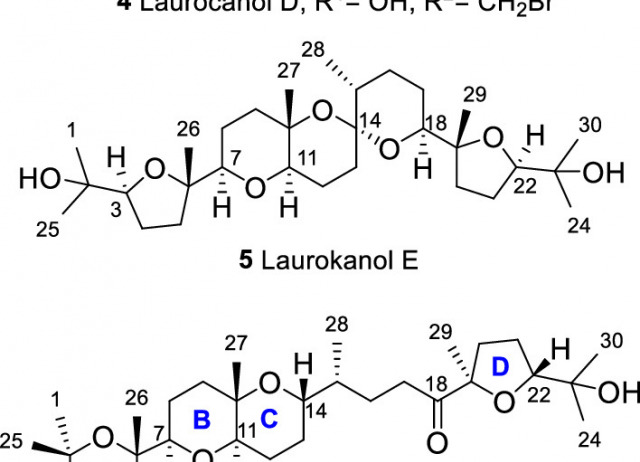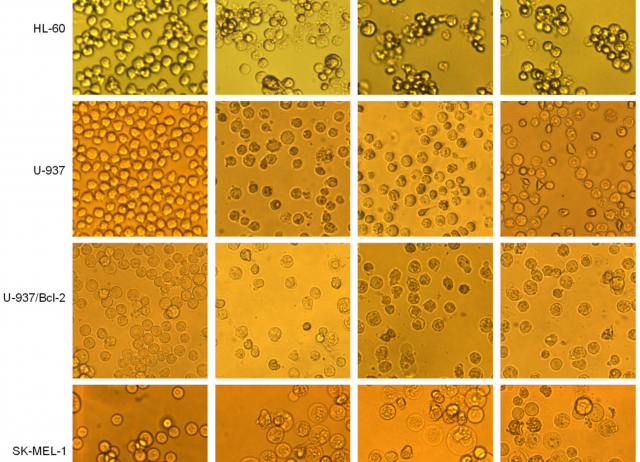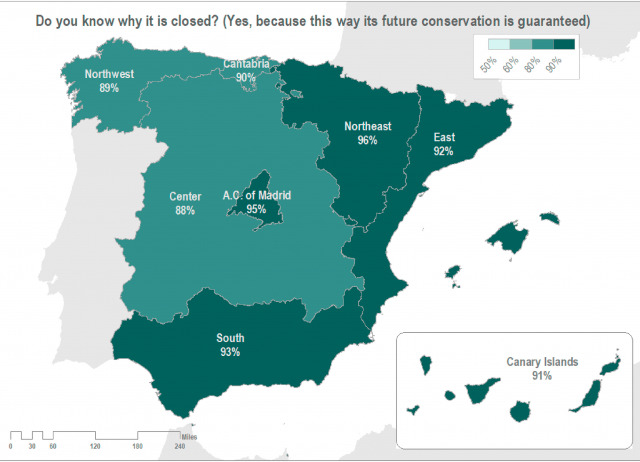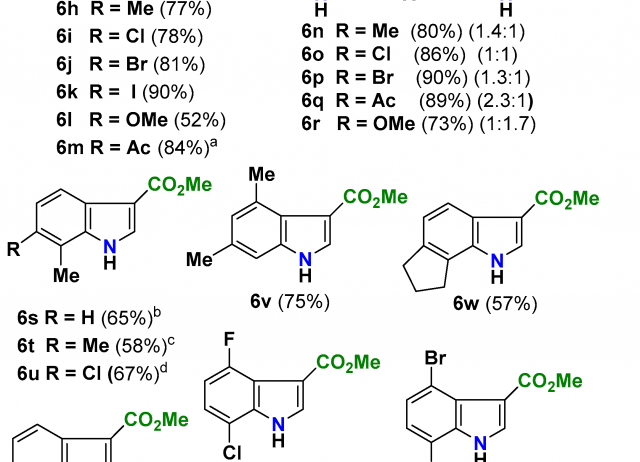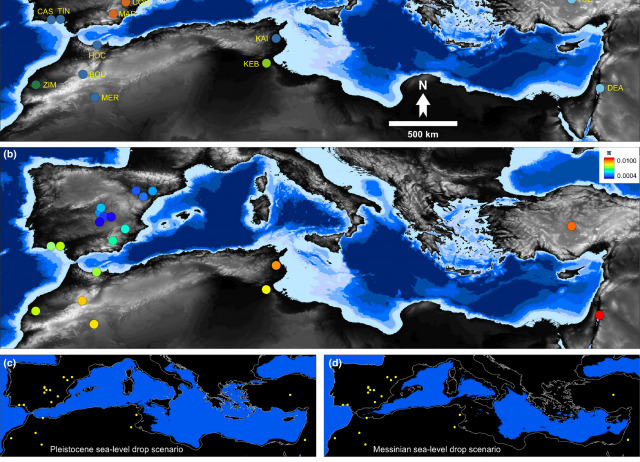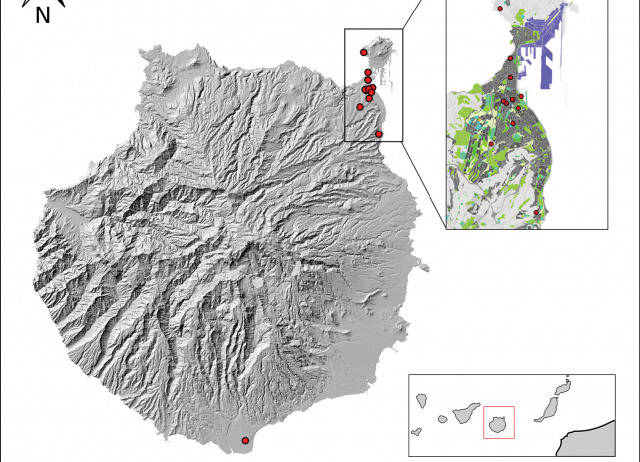
First record of the carpenter bee Xylocopa pubescens (Hymenoptera, Apidae) in the Canary Islands confirmed by DNA barcoding
Island ecosystems are particularly vulnerable to the introduction of exotic species that can have an impact on local fauna and flora. Here, the carpenter bee Xylocopa pubescens is reported in Gran Canaria (Canary Islands, Spain) for the first time. This species is native to North Africa and the Near East and shows a rapid dispersion across the city of Las Palmas de Gran Canaria, together with a single record in the southernmost tip of the island. Different hypotheses about its arrival to the island are discussed.
Ruiz, Carlos; Suárez, Daniel; Naranjo, Manuel; De la Rúa, Pilar
Structure and Computational Basis for Backbone Rearrangement in Marine Oxasqualenoids
Six novel oxasqualenoids (polyether triterpenes) were isolated from the red alga Laurencia viridis. Laurokanols A–E (1–5) comprise an unreported tricyclic core with a [6,6]-spiroketal system. Yucatecone (6) shows a biogenetically intriguing epimerization at C14. Quantum mechanical calculations were used to corroborate their structures and to explain key steps involved in the biogenetic mechanisms proposed for the formation of oxasqualenoids.
Cen-Pacheco, Francisco; Santiago-Benítez, Adrián J.; Tsui, Ka Yi; Tantillo, Dean J.; Fernández, José J.; Hernández Daranas, Antonio
Assessing the Potential Replacement of Laurel Forest by a Novel Ecosystem in the Steep Terrain of an Oceanic Island
Biological invasions are a major global threat to biodiversity and often affect ecosystem services negatively. They are particularly problematic on oceanic islands where there are many narrow-ranged endemic species, and the biota may be very susceptible to invasion. Quantifying and mapping invasion processes are important steps for management and control but are challenging with the limited resources typically available and particularly difficult to implement on oceanic islands with very steep terrain. Remote sensing may provide an excellent solution in circumstances where the invading species can be reliably detected from imagery. We here develop a method to map the distribution of the alien chestnut (Castanea sativa Mill.) on the island of La Palma (Canary Islands, Spain), using freely available satellite images. On La Palma, the chestnut invasion threatens the iconic laurel forest, which has survived since the Tertiary period in the favourable climatic conditions of mountainous islands in the trade wind zone. We detect chestnut presence by taking advantage of the distinctive phenology of this alien tree, which retains its deciduousness while the native vegetation is evergreen. Using both Landsat 8 and Sentinel-2 (parallel analyses), we obtained images in two seasons (chestnuts leafless and in-leaf, respectively) and performed image regression to detect pixels changing from leafless to in-leaf chestnuts. We then applied supervised classification using Random Forest to map the present-day occurrence of the chestnut. Finally, we performed species distribution modelling to map the habitat suitability for chestnut on La Palma, to estimate which areas are prone to further invasion. Our results indicate that chestnuts occupy 1.2% of the total area of natural ecosystems on La Palma, with a further 12–17% representing suitable habitat that is not yet occupied. This enables targeted control measures with potential to successfully manage the invasion, given the relatively long generation time of the chestnut. Our method also enables research on the spread of the species since the earliest Landsat images
Devkota, Ram Sharan; Field, Richard; Hoffman, Samuel; Walentowitz, Anna; Medina, Félix M.; Vetaas, Ole Reidar; Chiarucci, Alessandro; Weiser, Frank; Jentsch, Anke; Beierkuhnlein, Carl
Chlorinated Guaiane-Type Sesquiterpene Lactones as Cytotoxic Agents against Human Tumor Cells
Guaiane-type sesquiterpene lactones are naturally occurring compounds which have attracted attention due to their array of biological activities. In this study, chlorinated guaianolides <b>1</b>–<b>8</b>, isolated from plants of the genus <i>Centaurea</i>, were evaluated against the human leukemia cell lines HL-60, U-937, a specific U-937 cell line that overexpresses the anti-apoptotic Bcl-2 protein and the human melanoma cell line SK-MEL-1. This established the relevant structure-growth inhibition relationships. Chlorohyssopifolins A (<b>1</b>), C (<b>3</b>) and D (<b>4</b>) and linichlorin A (<b>6</b>) were the most potent compounds in terms of inducing growth inhibition in the four cell lines. IC<sub>50</sub> values were below 10 μM in all cases. Chlorohyssopifolins A (<b>1</b>) and D (<b>4</b>) and linichlorin A (<b>6</b>) were potent apoptotic inducers in human U-937 leukemia cells, as determined by fluorescent microscopy and flow cytometry, and their mechanism of action was associated with cytochrome <i>c</i> release, caspase activation and poly(ADP-ribose)polymerase cleavage. Overall this study shows that guaianolides induce cytotoxicity against human tumor cells and provides important insights into the cell death pathways that are involved.
Estévez-Sarmiento, Francisco; Saavedra, Ester; Ruiz-Estévez, Mercedes; León, Francisco; Quintana, José; Brouard, Ignacio; Estévez Francisco
Marine Anticancer Agents: An Overview with a Particular Focus on Their Chemical Classes
The marine environment is a rich source of biologically active molecules for the treatment of human diseases, especially cancer. The adaptation to unique environmental conditions led marine organisms to evolve di erent pathways than their terrestrial counterparts, thus producing unique chemicals with a broad diversity and complexity. So far, more than 36,000 compounds have been isolated from marine micro- and macro-organisms including but not limited to fungi, bacteria, microalgae, macroalgae, sponges, corals, mollusks and tunicates, with hundreds of new marine natural products (MNPs) being discovered every year.Marine-based pharmaceuticals have started to impactmodern pharmacology and different anti-cancer drugs derived frommarine compounds have been approved for clinical use, such as: cytarabine, vidarabine, nelarabine (prodrug of ara-G), fludarabine phosphate (pro-drug of ara-A), trabectedin, eribulin mesylate, brentuximab vedotin, polatuzumab vedotin, enfortumab vedotin, belantamab mafodotin, plitidepsin, and lurbinectedin. This review focuses on the bioactive molecules derived from the marine environment with anticancer activity, discussing their families, origin, structural features and therapeutic use.
Barrera, Marilia; Spanò, Virginia; Montalbano, Alessandra; Cueto, Mercedes; Díaz Marrero, Ana R.; Deniz, Irem; Erdogan, Aysegül; Lukic Bilela, Lada; Moulin, Corentin; Taffin-de-Givenchy, Elisabeth; Spriano, Filippo; Perale, Giuseppe; Mehiri, Mohamed; Rotter, Ana; Thomas, Olivier P.; Barraja, Paola; Gaudêncio, Susana P.; Bertoni, Francesco
The social value of heritage: Balancing the promotion-preservation relationship in the Altamira World Heritage Site, Spain
The designation of World Heritage Sites (WHSs) by UNESCO strengthens the international and national image of heritage destinations in the growing market of cultural tourism. Understanding how different stakeholders interpret the value of cultural heritage is one of the most important assets for balancing the promotion and protection of WHSs. This study draws on the case of the Altamira Prehistoric Cave WHS (Spain), whose preservation is under threat and constant debate. It explores factors determining the social value of heritage, namely: existence, aesthetic, economic, and legacy value. In doing so, this paper contributes to emerging debates on heritage management and tourist destinations. Data were collected using two surveys, one focused on visitors, with a total of 1047 valid surveys, and another on the Spanish population as a WHS host community, with a total of 1000 valid surveys. The analysis of these surveys shows how the existence, aesthetic, economic and legacy value dimensions of cultural heritage can build up brands around WHSs. The social-value dimension of cultural heritage therefore affects the market potential of WHSs, whose market potential is closely related to the education levels of a given society. These findings provide valuable information and insights for academics, destination managers and policy-makers in the debate about the preservation and tourism branding of Altamira. This will allow different stakeholders to identify opportunities to develop synergies between tourism promotion and heritage preservation, to both strengthen the brand image of a WHS and preserve its heritage.
Parga-Dans, Eva; Alonso-González, Pablo; Otero Enríquez, Raimundo
A General and Scalable Synthesis of Polysubstituted Indoles
A consecutive 2-step synthesis of N-unprotected polysubstituted indoles bearing an electron-withdrawing group at the C-3 position from readily available nitroarenes is reported. The protocol is based on the [3,3]-sigmatropic rearrangement of N-oxyenamines generated by the DABCO-catalyzed reaction of N-arylhydroxylamines and conjugated terminal alkynes, and delivers indoles endowed with a wide array of substitution patterns and topologies.
Tejedor, David; Diana-Rivero, Raquel; García-Tellado, Fernando
Genomic insights into the origin of trans‐Mediterranean disjunct distributions
Aim
Two main biogeographical hypotheses have been proposed to explain the Mediterranean‐Turanian disjunct distributions exhibited by numerous steppe‐dwelling organisms, namely (a) dispersal during the Messinian salinity crisis (∼5.96–5.33 Ma) followed by range fragmentation and vicariance, and (b) Pleistocene colonization and recent processes of population subdivision (<2 Ma). Despite the two hypotheses postulate the role of climatic alterations and changes in landmass configuration on determining such disjunct distributions, estimates of the timing of lineage diversification have not been complemented so far with spatially‐explicit tests providing independent evidence on the proximate processes underlying geographical patterns of population genetic connectivity/fragmentation.
Location
Mediterranean‐Turanian region.
Taxon
Saltmarsh band‐winged grasshopper (Mioscirtus wagneri).
Methods
We integrate different sources of genetic (mtDNA and ddRADseq) and spatial information (configuration of emerged lands and niche modelling) to evaluate competing hypotheses of lineage diversification in the saltmarsh band‐winged grasshopper, a halophile species showing a classical Mediterranean‐Turanian disjunct distribution.
Results
Phylogenomic analyses reveal the presence of two North African cryptic lineages and support that trans‐Mediterranean populations of the species diverged in the Pleistocene, with evidence of post‐Messinian permeability of the Strait of Gibraltar to gene flow likely associated with sea level drops during glacial periods. Accordingly, spatial patterns of genetic differentiation are best explained by a scenario of population connectivity defined by the configuration of emerged landmasses and environmentally suitable habitats during glacial periods, a time when effective population sizes of the species peaked as inferred by genomic‐based demographic reconstructions.
Main conclusions
Our results support post‐Messinian colonization and Pleistocene diversification as the biogeographical scenario best explaining the trans‐Mediterranean disjunct distributions of halophilous organisms.
Noguerales, Víctor; Cordero, Pedro J.; Knowles, L. Lacey; Ortego, Joaquín
Species functional traits and abundance as drivers of multiplex ecological networks: first empirical quantification of inter-layer edge weights
Many vertebrate species act as both plant pollinators and seed-dispersers, thus interconnecting these processes, particularly on islands. Ecological multilayer networks are a powerful tool to explore interdependencies between processes; however, quantifying the links between species engaging in different types of interactions (i.e. inter-layer edges) remains a great challenge. Here, we empirically measured inter-layer edge weights by quantifying the role of individually marked birds as both pollinators and seed-dispersers of Galápagos plant species over an entire year. Although most species (80%) engaged in both functions, we show that only a small proportion of individuals actually linked the two processes, highlighting the need to further consider intra-specific variability in individuals' functional roles. Furthermore, we found a high variation among species in linking both processes, i.e. some species contribute more than others to the modular organization of the multilayer network. Small and abundant species are particularly important for the cohesion of pollinator seed-dispersal networks, demonstrating the interplay between species traits and neutral processes structuring natural communities.
Hervías-Parejo, Sandra; Tur, Cristina; Heleno, Rubén; Nogales, Manuel; Timóteo, Sérgio; Traveset, Anna
Food habits of the Macaronesian Sparrowhawk (Accipiter Nisus Granti) on Madeira
The Eurasian Sparrowhawk (Accipiter nisus) is a small bird of prey distributed throughout Europe and Asia and closely linked to forest environments. It is a predator of a wide diversity of prey, primarily birds (Newton et al. 1986). On the mainland, the male Eurasian Sparrowhawk typically captures small birds (40–120 g in mass), whereas females (nearly twice the mass of males) prey on larger birds (up to 500 g; Opdam 1975, Newton 1978).
González, Yolanda; Hervías-Parejo, Sandra; Pereira, Estefanía; Vulcano, Antonio; Álvarez, Soledad; Gouveia, Cátia; Nunes, Marta; Castelló, Laura; Fagundes, Isabel; Coelho, Nádia; Delgado, Guillermo, Nogales, Manuel
